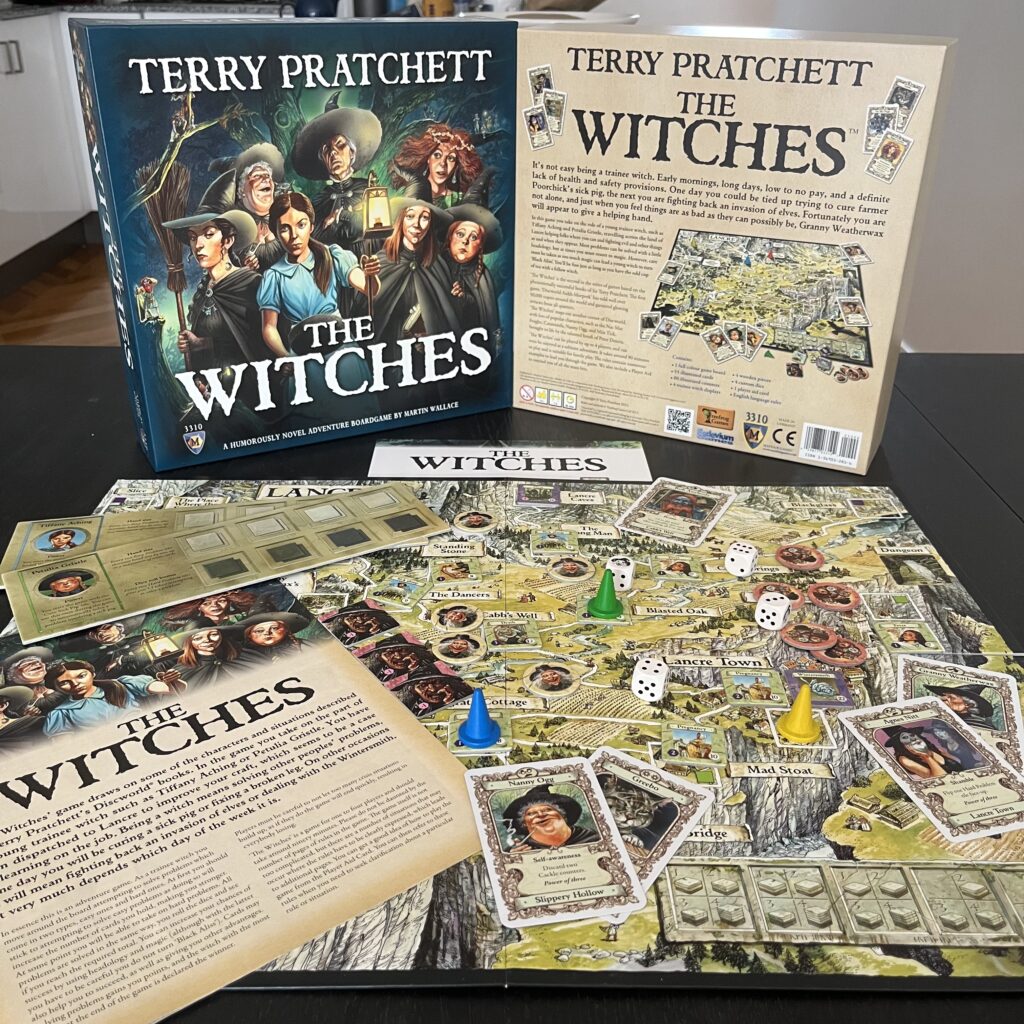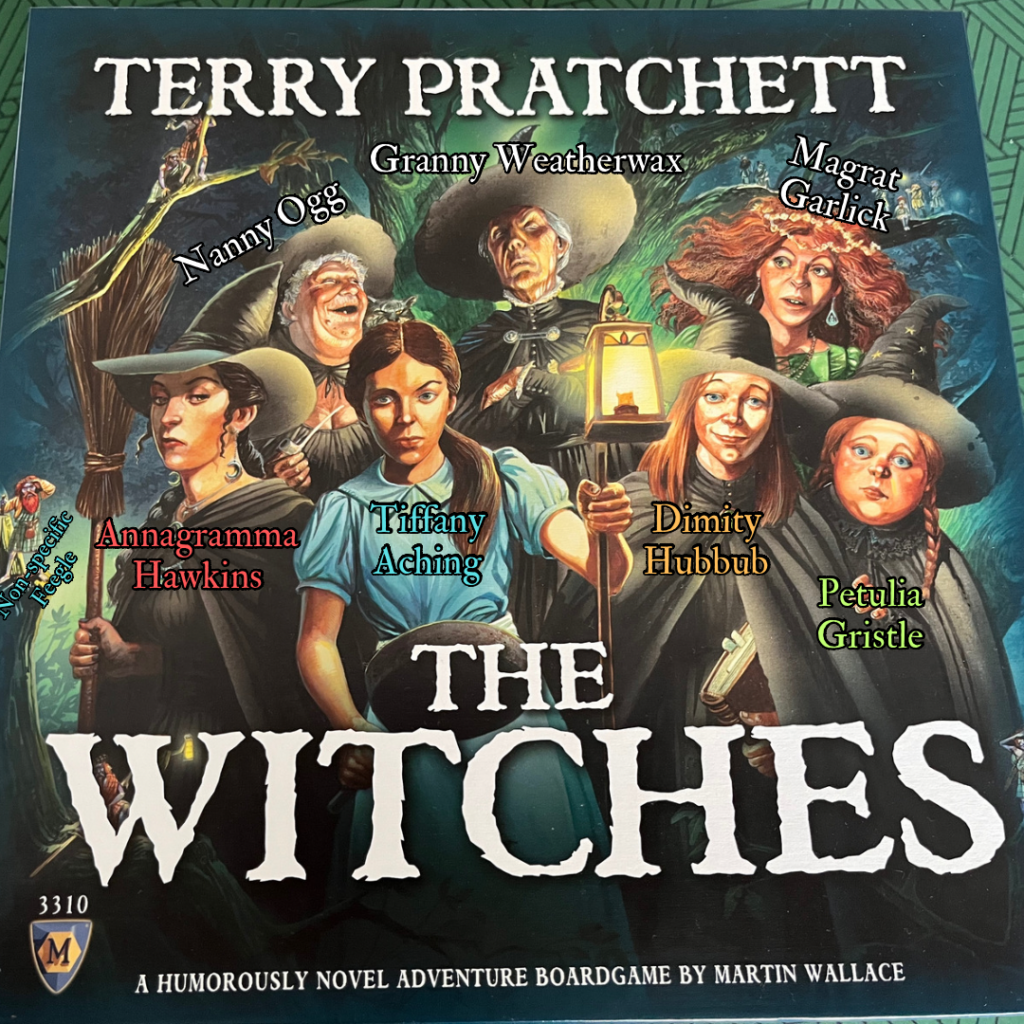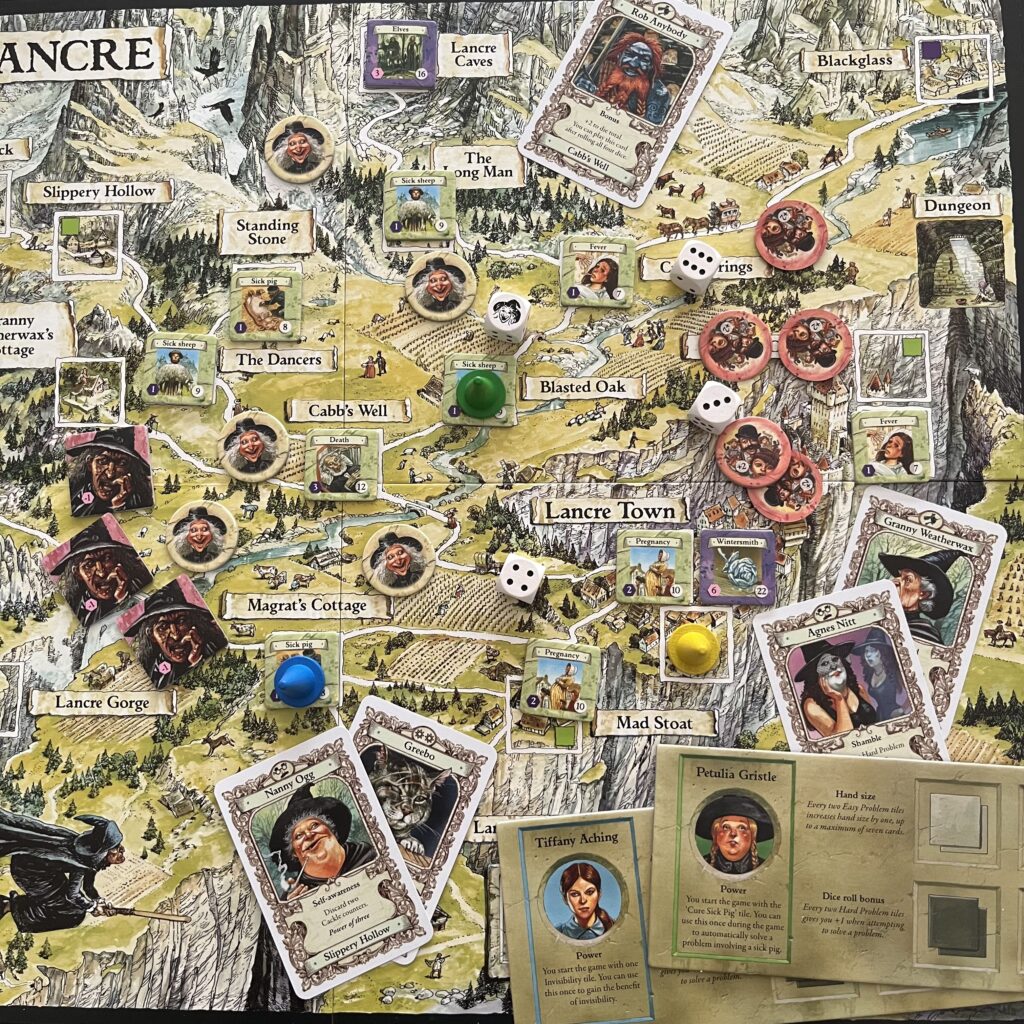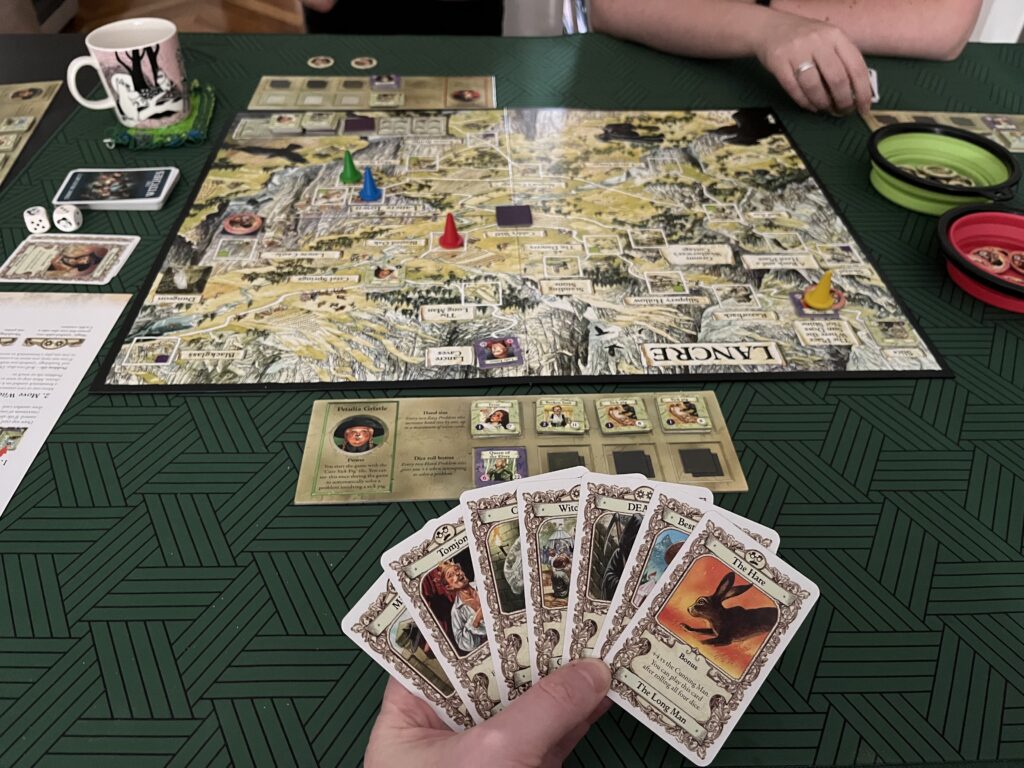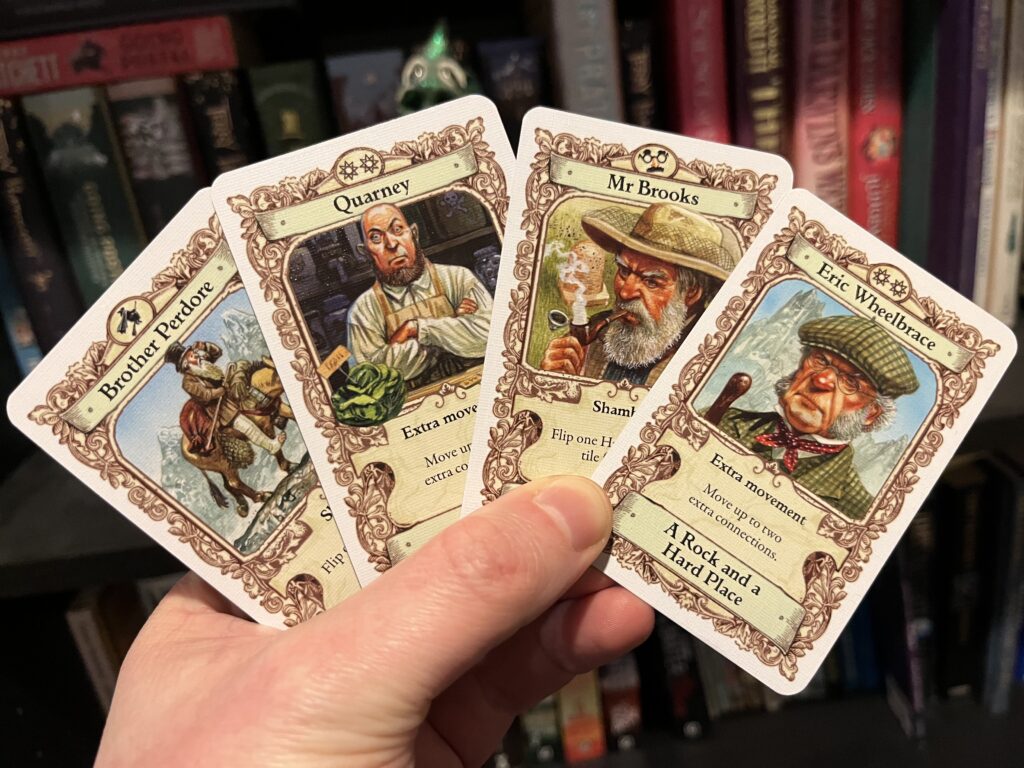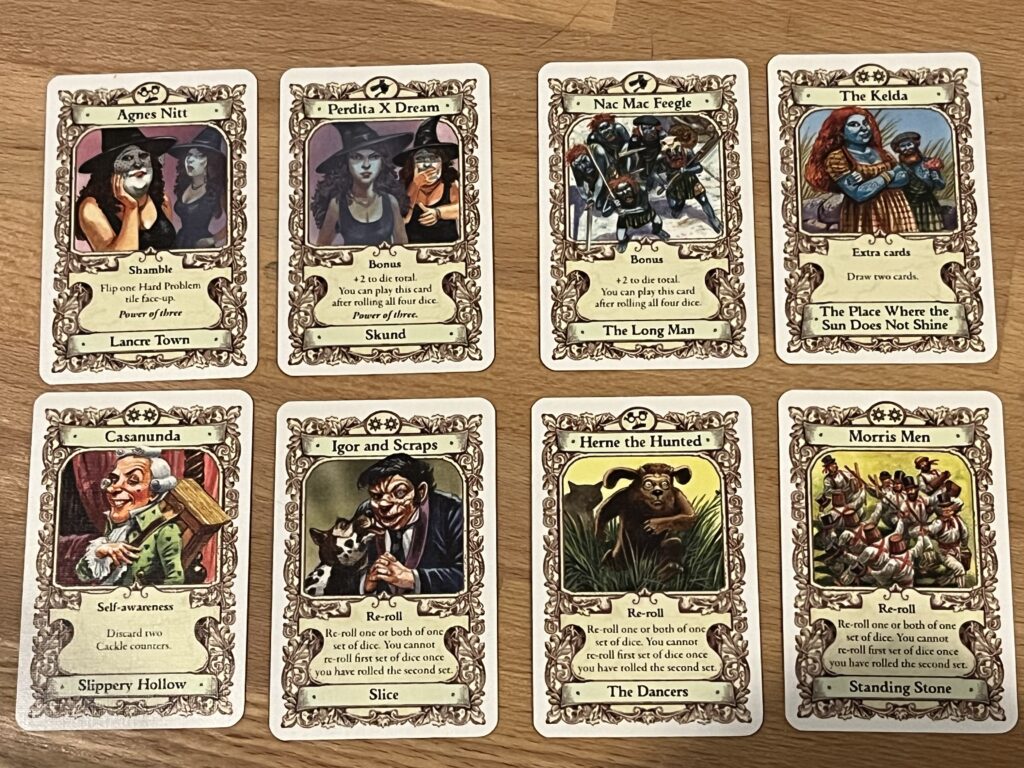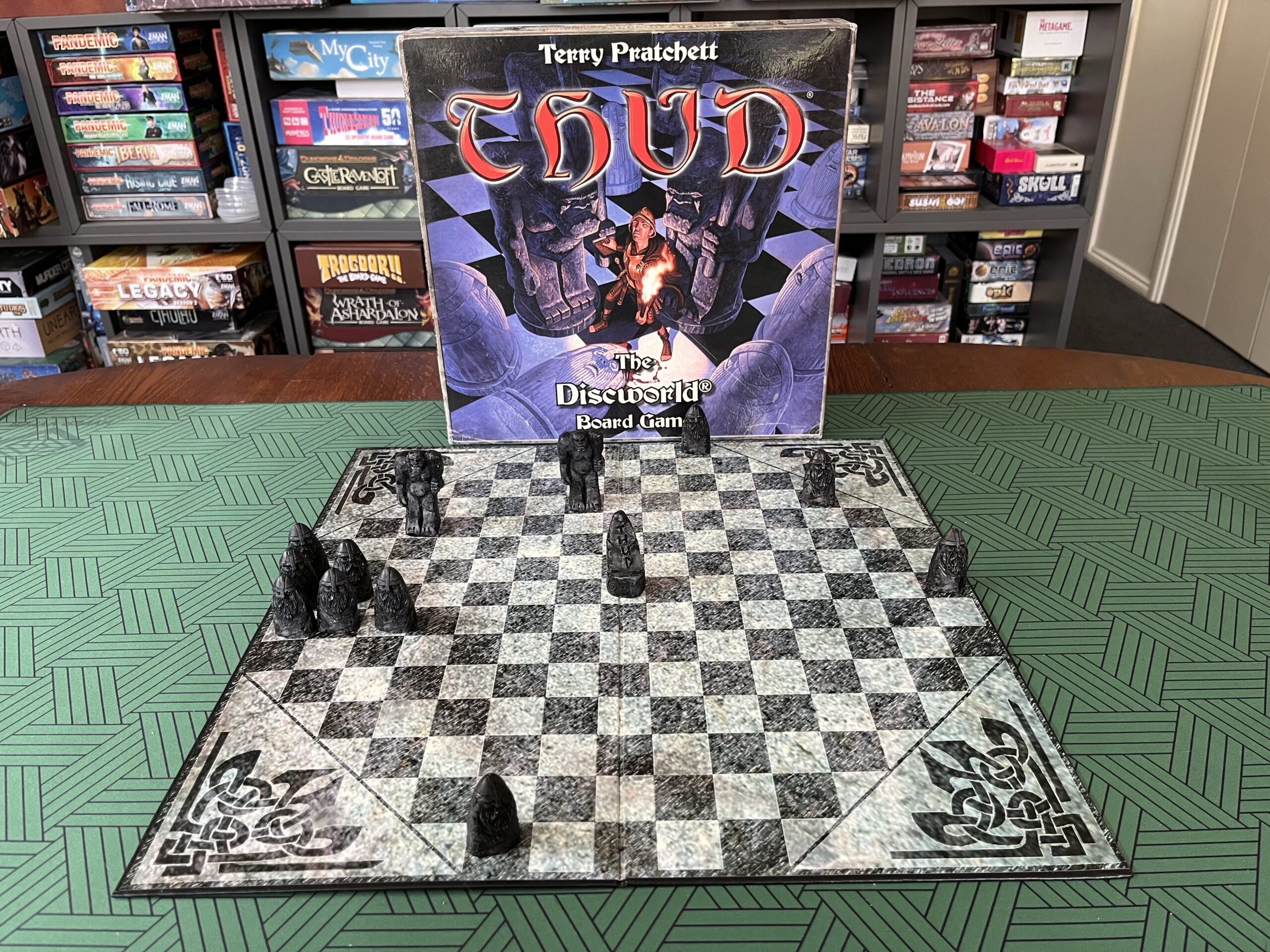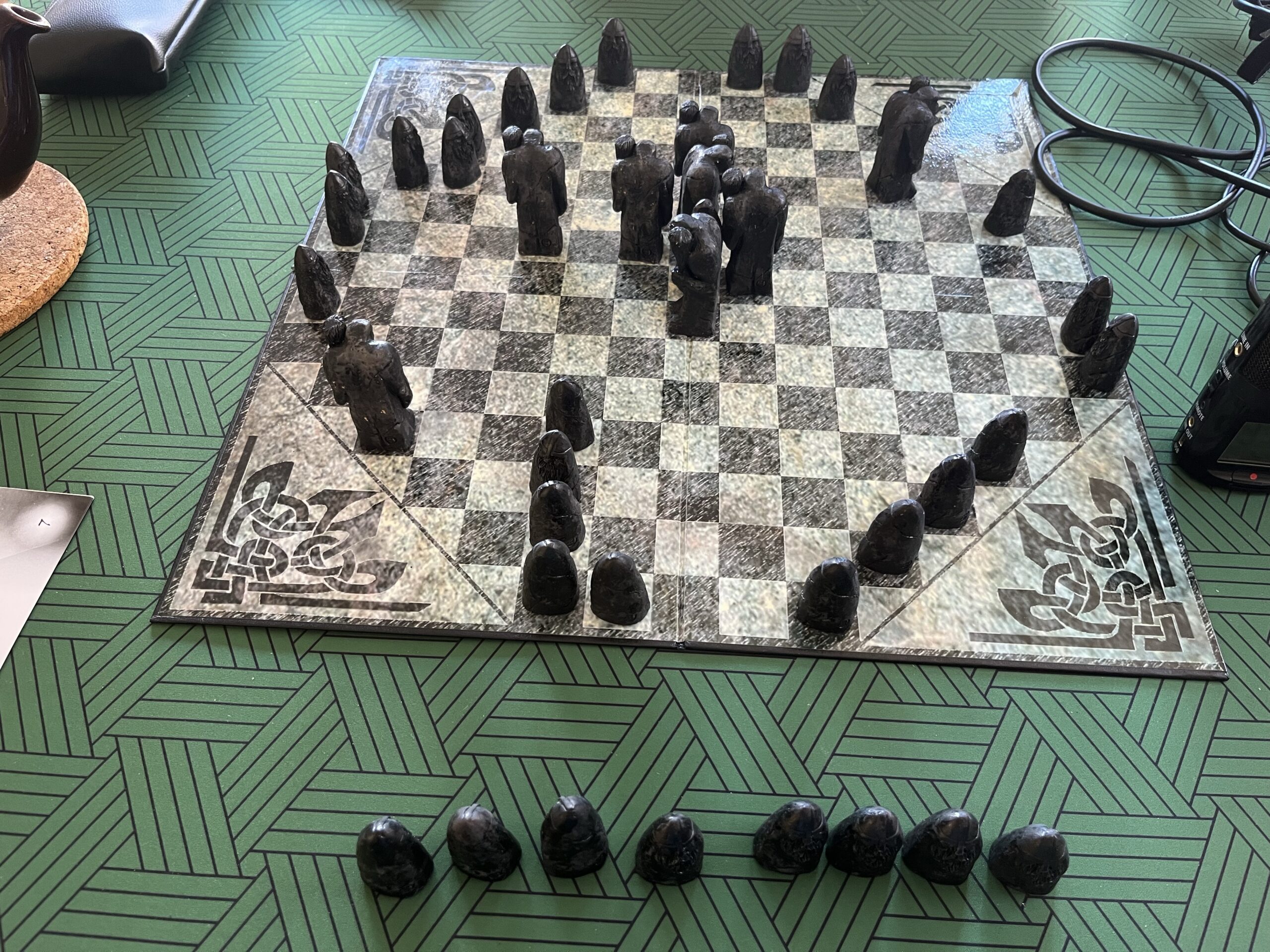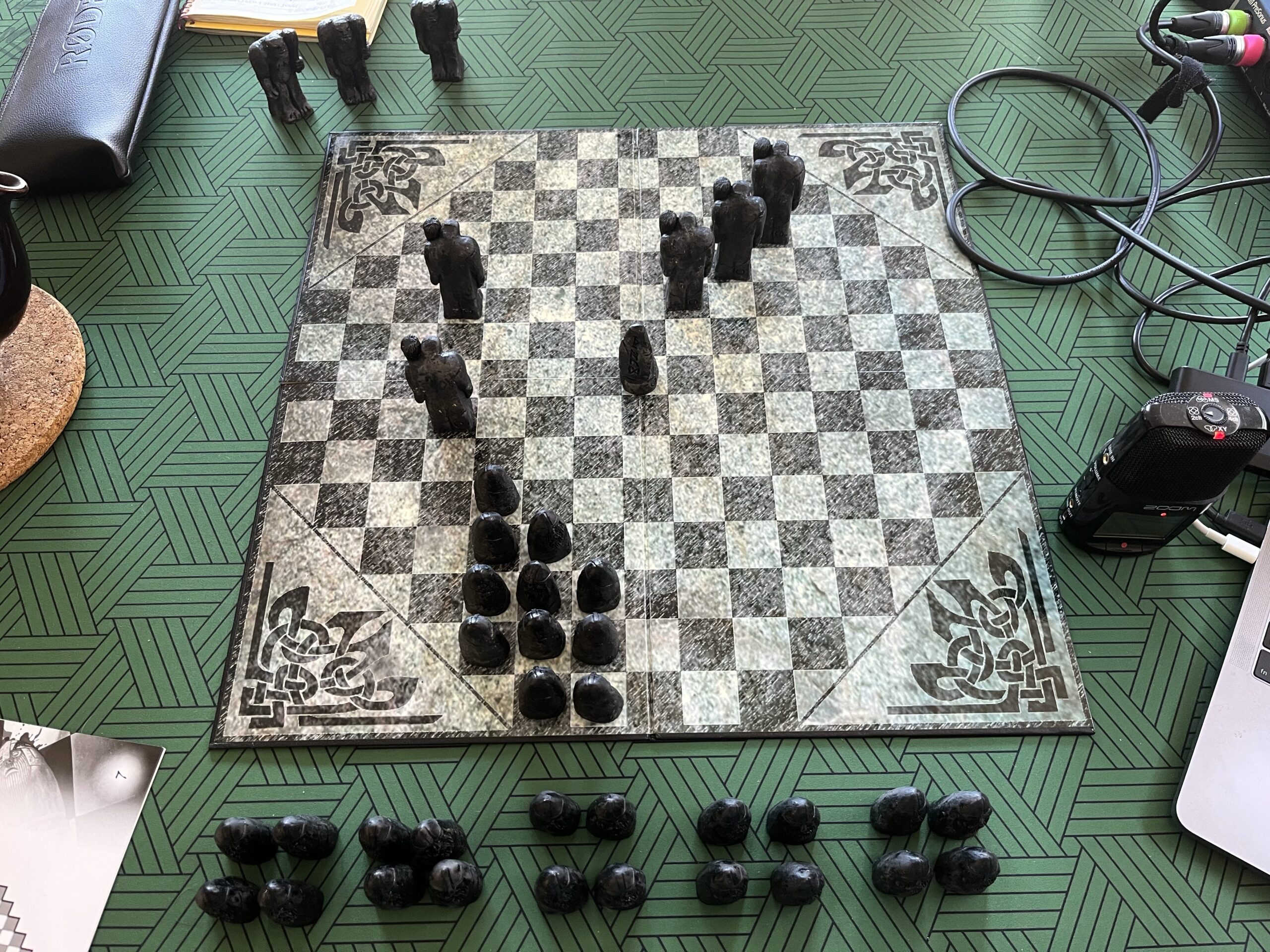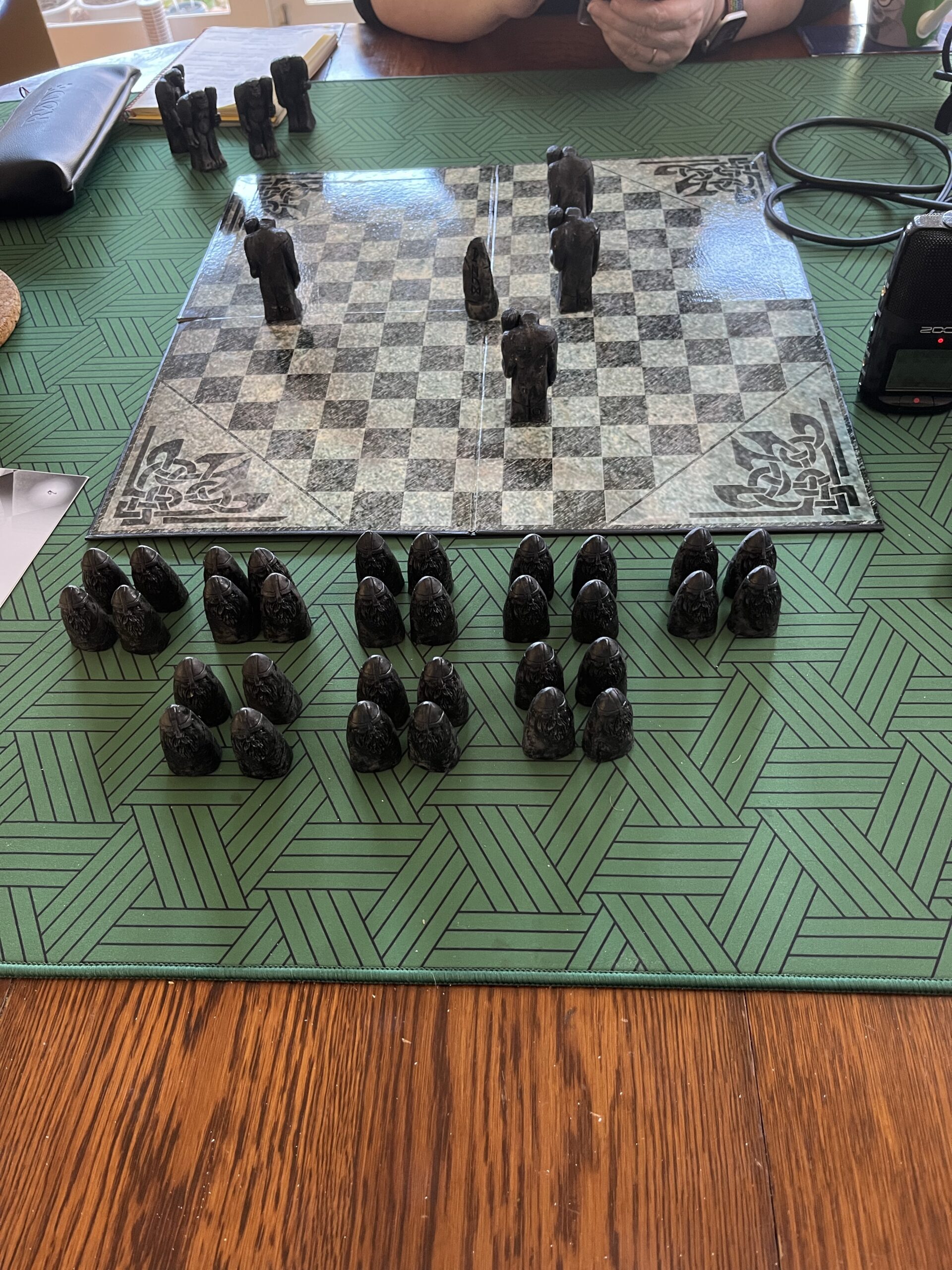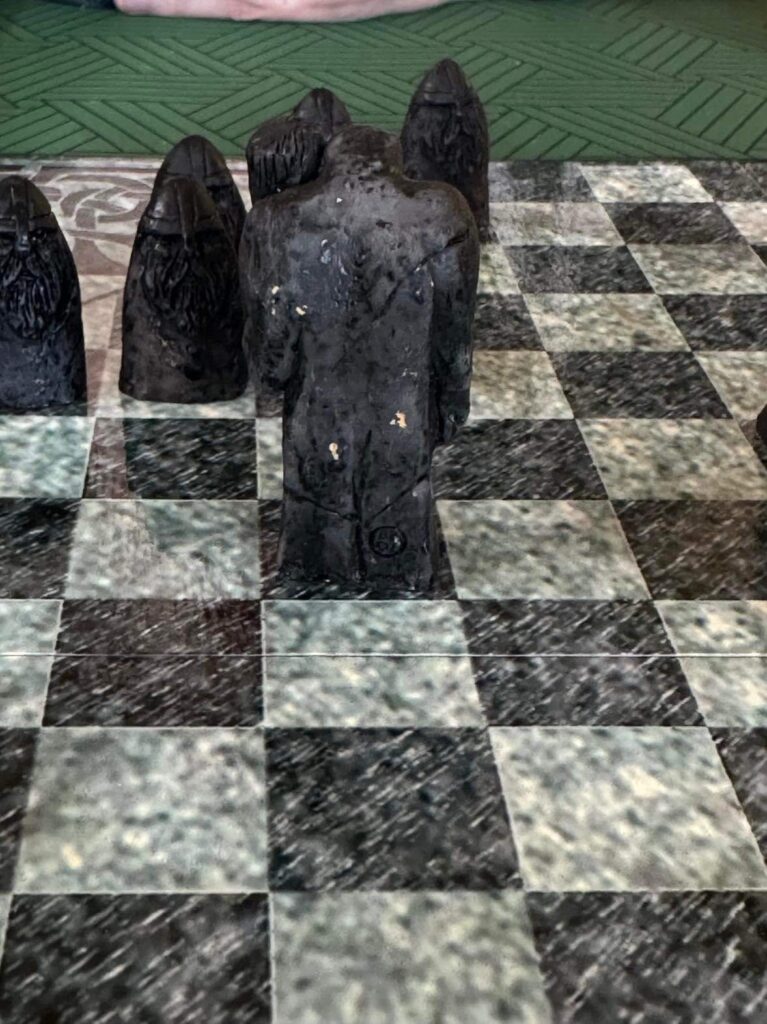#Pratchat67 – The Three-Elf Problem
This month we welcome back the very game Steve Lamattina as we put on our witch’s hats, grab our brooms and head out into Lancre to solve problems in Martin Wallace’s The Witches, the fourth official Discworld board game.
As Tiffany Aching or one of her fellow apprentice witches, you’ll run around Lancre solving problems big and small with headology and magic, helped by an assortment of local characters. But it’s not just about getting the highest score – you’ll also need to watch each other’s backs or everyone in the kingdom could lose! Be sure to stop and share tea, or you might end up a cackler…
Which witch is your favourite? How does The Witches rank against the other Discworld board games? Do you see it as a great family game, a mediocre co-op challenge, or something in between? Who do you wish had been included as a card or playable character? And would you use the game to introduce your friends to board games, the Discworld, or both?
Check out the episode notes for pictures of the game components, and use the hashtag #Pratchat67 on social media to join in the conversation on this one!
Podcast: Play in new window | Download (Duration: 1:27:39 — 40.6MB)
Steve Lamattina is a writer and editor whose work spans film, music, education and technology. He was once CEO of the youth publishing company Express Media, whom we still stan, and currently works for the Victorian Department of Education. You can find him on Twitter as @steve_lamattina.
Next month we’re going back…back to nearly the beginning! Yes, for #Pratchat68 we’re setting the procrastinator coordinates for 1981 as we read and discuss Pratchett’s proto-Discworld sci-fi novel Strata. It’s a nice short book to get in before we tackle The Long Utopia in July… Use the hashtag #Pratchat68 to send us questions about Strata!
You’ll find the full notes and errata for this episode on our web site.
Want to help us get to the end of our six(ish) year mission and read every Pratchett book – and more? You can support us with a tip, or a subscription for as little as $2 a month, and that’s cuttin’ our own throats! See our Support Us page for details.

